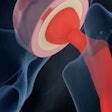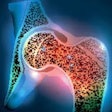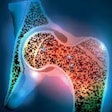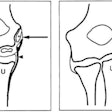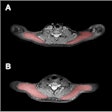
SALT LAKE CITY - There’s no doubt a musculoskeletal radiologist should know all about bones, but what if he or she is interested in sports imaging in particular? Do radiologists who’ve got game fare better than those who don’t? AuntMinnie.com informally polled some physicians at the Polyclinic on this issue, and found a certain concordance in their responses.
"I think it helps aid in diagnosis," said Dr. Paul Lento, an attending physician in physical medicine and rehabilitation at the Rehabilitation Institute of Chicago. "If they have an understanding of the sport, they can better understand the mechanics of what happened and, possibly, where to look for the injuries." But Lento, who specializes in ice-hockey injuries, isn’t advocating that physicians become completely entrenched in a single sport.
"You might have an interest in one particular sport, but you should probably be well-versed in a lot of different sports. Luge, for instance, I wouldn’t be as well-versed in," Lento said.
An apt comment, as his Polyclinic co-worker, Dr. Bob Cummings Jr., is a luge expert. An orthopedist in private practice in Chelmsford, MA, Cummings has authored, thus far, the definitive article on luge injuries. A former luge slider himself, Cummings' stint at the clinic came after the luge competition, but he said he was looking forward to diagnosing any possible injuries sustained during the skeleton run, a sport that was reintroduced at the 2002 Games.
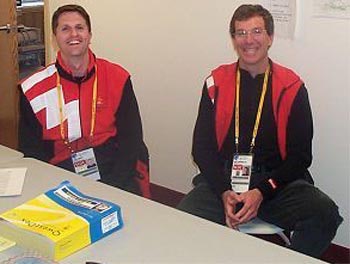 |
| Dr. Paul Lento (left) and Dr. Bob Cummings Jr. at the Olympic Polyclinic. |
Overall, Cummings and Lento agreed that imaging helps sports-medicine specialists make important treatment decisions. One advantage they found in working at the Polyclinic was the chance to be on hand during the readings, and offer immediate clinical information to the radiologist.
It’s a scenario that’s becoming increasingly common as orthopedic clinics are asking radiologists to join their practices and do in-house imaging, said Dr. Kent Sanders, a University of Utah radiologist who also volunteered at the Polyclinic. Sanders added that he sees a viable future for sports imaging as a separate specialty.
"There definitely is a big demand for sports imaging, especially in university and professional athletic settings," Sanders said. "If you have knowledge of a particular sport, you are more familiar with the injury patterns. That kind of information can be very important, especially if you are dealing with a big-name athlete with a lot at stake."
By Shalmali Pal
AuntMinnie.com staff writer
February 25, 2002
Related Reading
Luge brings contusions, concussions, fractures, February 12, 2002
Copyright © 2002 AuntMinnie.com








